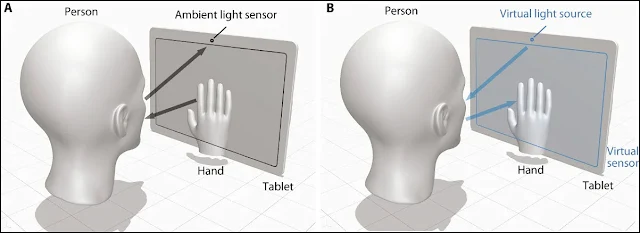The Hidden Danger of Your Phone's Light Sensor They Can Use It to Spy on You

The light sensor on your mobile phone is used to measure ambient light and automatically adjust the screen brightness. While it may seem like a harmless component, a team of researchers at MIT have shown that it is possible to use the light sensor in your mobile phone to obtain images, meaning it could be used to spy on you.
This discovery poses serious risks to the privacy of users of any type of device equipped with a light or brightness sensor, with smartphone users being the most affected. The potential for being spied on is enormous, and above all, it is undetectable by anyone.
- The light sensor on your cell phone can be used to spy on you.
Before we explain how MIT researchers discovered this mobile security issue, let’s see how this component works. An ambient light sensor is a component found in most smart devices, such as mobile phones, tablets, or watches.
It is a low-risk sensor, as its access is not restricted by any permission or privilege, and it can be used by any application without the user's knowledge, making it completely undetectable when used incorrectly.
After this brief introduction to how the light sensor works, we will now see how and what the MIT researchers did to find this vulnerability. Of course, it should be clarified that the light sensor does not record images as if it were a camera.
The MIT researchers' method involves displaying a known video clip on a screen, and using an ambient light sensor to pick up variations in the intensity of reflected light that is partially blocked by a hand touching the screen.
In this way, an inverse problem similar to that of a single-pixel image is formulated, which consists of reconstructing the image from a series of measurements of the light reflected from the scene. To reconstruct images of the user’s hand, the MIT researchers had to overcome several challenges.
The first is that the ambient light sensor has low sensitivity and high quantization, which means that it can only detect large changes in illumination and the values it provides are very discrete.
The second is that the ambient light sensor has a low sampling rate, which limits the speed and resolution of images that can be obtained. The third is that the ambient light sensor has a very wide field of view, which means that it captures light reflected from the entire screen and not just the area that the hand touches.
To solve these problems, researchers from MIT have proposed an inversion algorithm that includes an LP-norm attenuator and a deep denoiser to reconstruct images from the screen perspective.
This will be responsible for recovering the information lost due to quantization of the ambient light sensor, while the deep denoiser is responsible for enhancing the images by removing noise particles from the image.
All of this allowed the researchers to obtain images of the hand they were using in the study, at 32 x 32 pixels. These are low-resolution images, and are perfectly suitable for identifying the shapes and movements that were being made.
MIT researchers’ method reveals the hidden danger of your phone’s light sensor, which can be used to spy on your touch interaction with the device without you even realizing it. This poses a threat to user privacy.
Despite the huge problem this vulnerability poses, researchers from MIT point out that spying on users using the ambient light sensor is a slow and tedious process, as attackers have simpler methods to spy on users.



